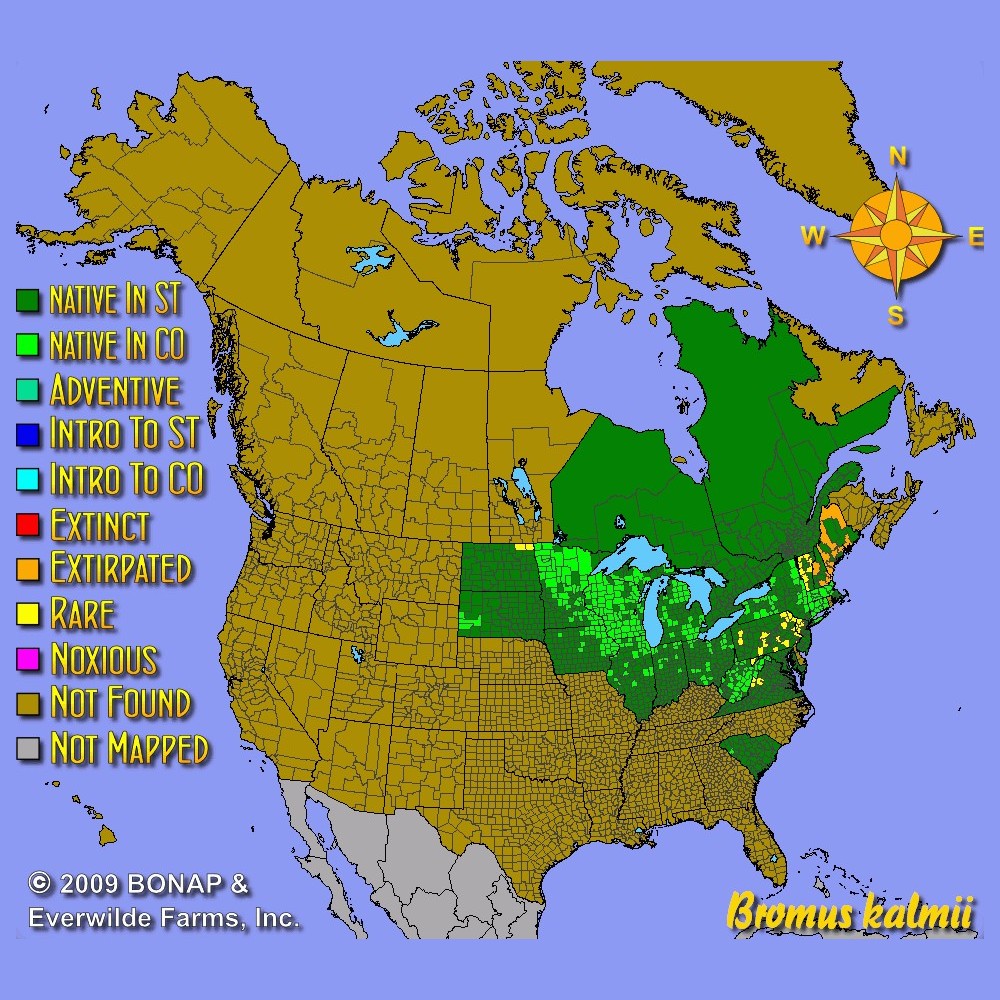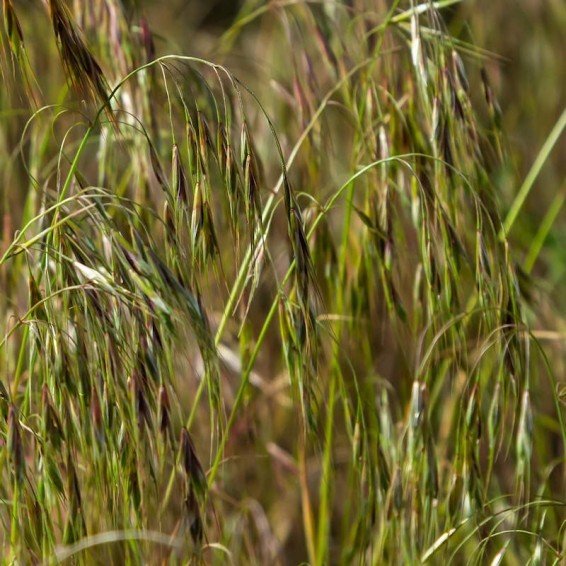Prairie Brome Seeds
Bromus kalmii
- HOW TO GROW
- FAST FACTS
HOW TO GROW
Sowing: Direct sow Prairie Brome grass seeds either in late fall or early spring. Plant Bromus Kalmii seeds just below the surface of the soil, compacting the soil very firmly. Keep the soil lightly moist until germination.
Growing: Water seedlings regularly until they become established. This plant has a short life span, but needs little maintenance. It grows best in average, well drained soil, though it adapts to nearly any soil type including rocky, shallow soil and clay. It tolerates cold temperatures extremely well, though it may suffer in extreme heat and drought. For best growth, water occasionally in especially dry weather. This plant may self-seed, and attracts small birds. It makes an excellent choice for controlling erosion.
Seed Saving: Collect the seed as soon as the seed heads begin to turn tan and dry; the seed should strip easily from the stem. Spread the seed out in a protected location until it has dried completely. Store Prairie Brome grass seeds in a cool, dry place.
FAST FACTS
Common Names: Arctic Brome
Latin Name: Bromus kalmii
Species Origin: US Native Grass or Sedge
Type: Native Grasses, Cool Season
Life Cycle: Perennial
USDA Zones: 3, 4, 5, 6
US Regions: Plains/Texas, Midwest, Northern, Northeast
Seeds per Ounce: 12,000
Stratification: No Stratification
Germination Ease: No Stratification
Sunlight: Full Sun, Part Sun
Height: 30 Inches
Color: Green, Brown
Bloom Season: Blooms Early Summer, Blooms Late Summer
DESCRIPTION

HOW TO GROW
Sowing: Direct sow Prairie Brome grass seeds either in late fall or early spring. Plant Bromus Kalmii seeds just below the surface of the soil, compacting the soil very firmly. Keep the soil lightly moist until germination.
Growing: Water seedlings regularly until they become established. This plant has a short life span, but needs little maintenance. It grows best in average, well drained soil, though it adapts to nearly any soil type including rocky, shallow soil and clay. It tolerates cold temperatures extremely well, though it may suffer in extreme heat and drought. For best growth, water occasionally in especially dry weather. This plant may self-seed, and attracts small birds. It makes an excellent choice for controlling erosion.
Seed Saving: Collect the seed as soon as the seed heads begin to turn tan and dry; the seed should strip easily from the stem. Spread the seed out in a protected location until it has dried completely. Store Prairie Brome grass seeds in a cool, dry place.
FAST FACTS
Common Names: Arctic Brome
Latin Name: Bromus kalmii
Species Origin: US Native Grass or Sedge
Type: Native Grasses, Cool Season
Life Cycle: Perennial
USDA Zones: 3, 4, 5, 6
US Regions: Plains/Texas, Midwest, Northern, Northeast
Seeds per Ounce: 12,000
Stratification: No Stratification
Germination Ease: No Stratification
Sunlight: Full Sun, Part Sun
Height: 30 Inches
Color: Green, Brown
Bloom Season: Blooms Early Summer, Blooms Late Summer




